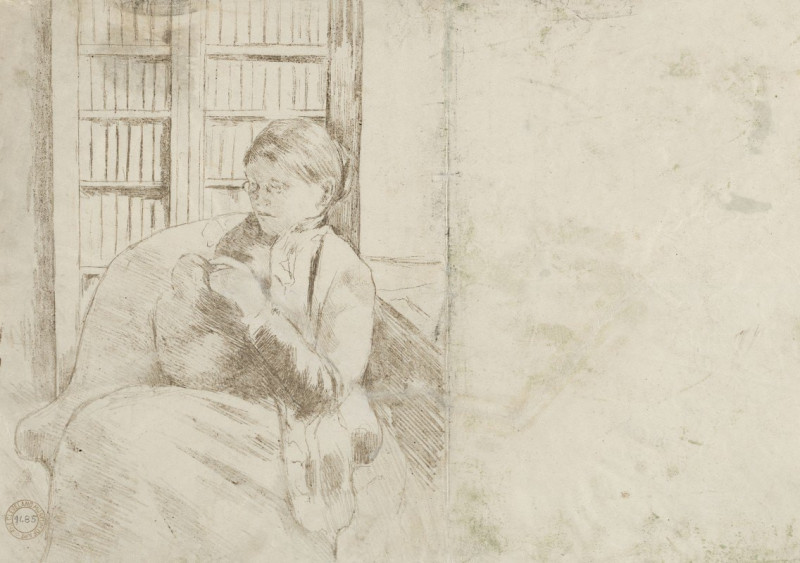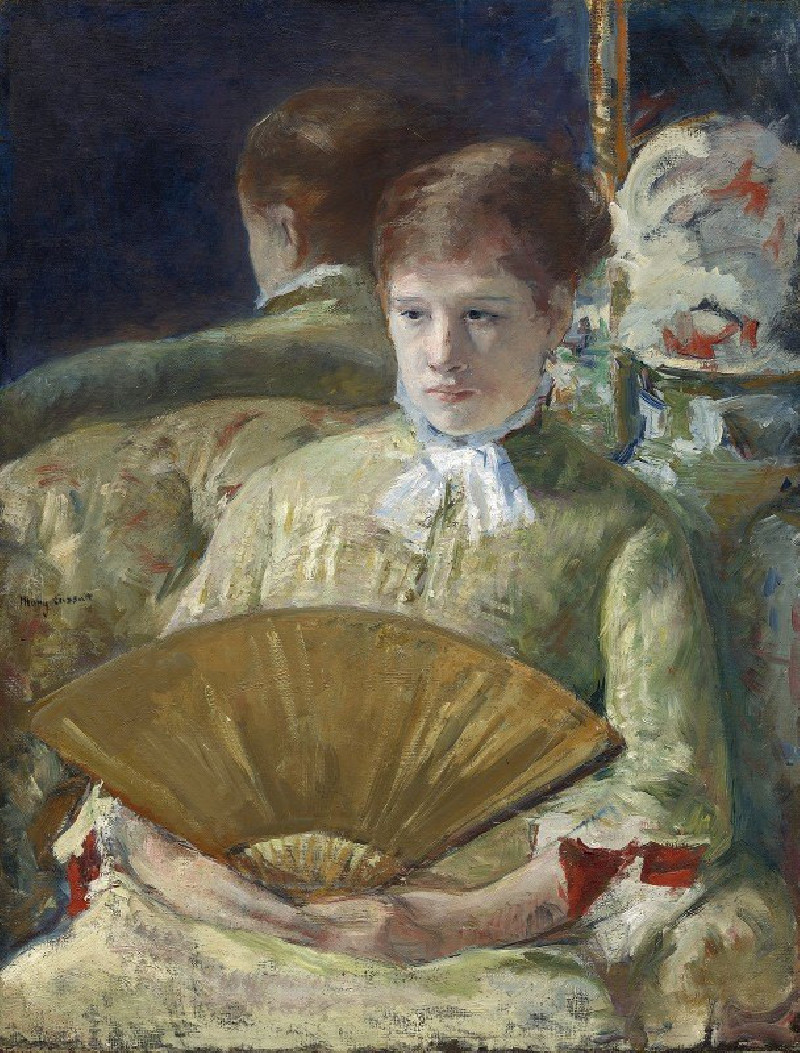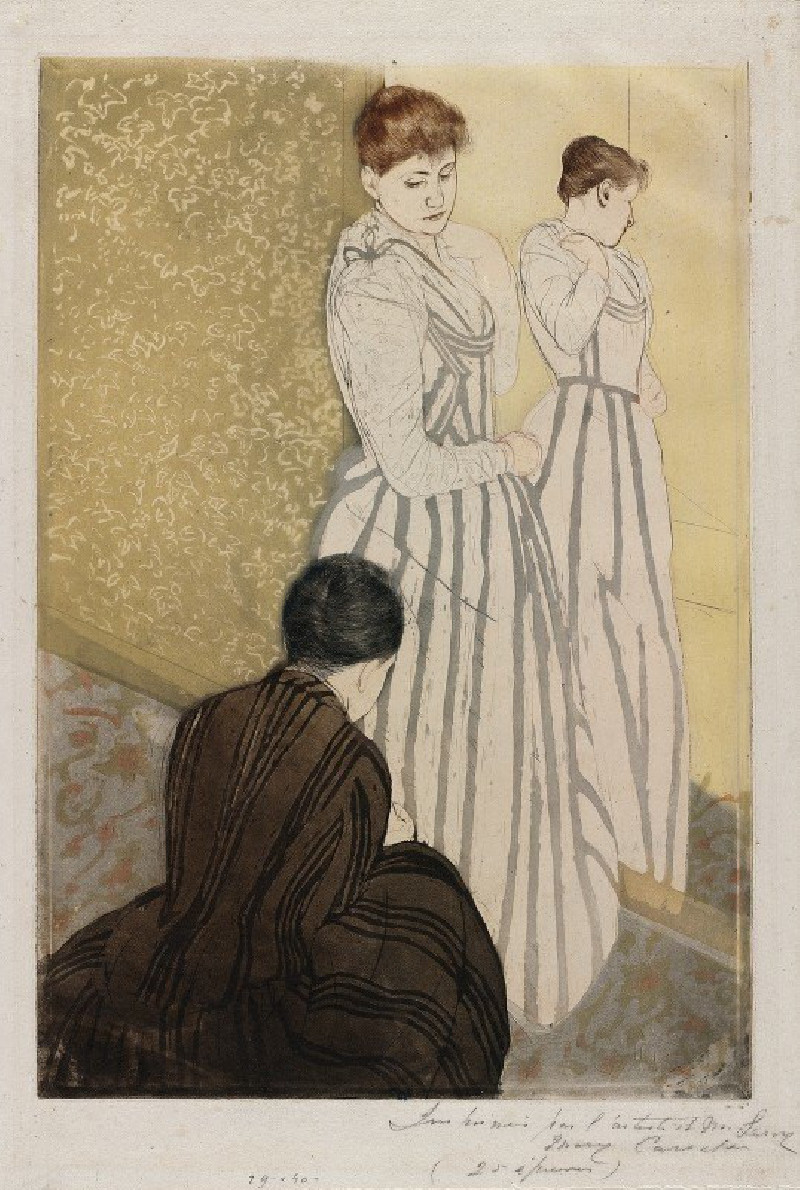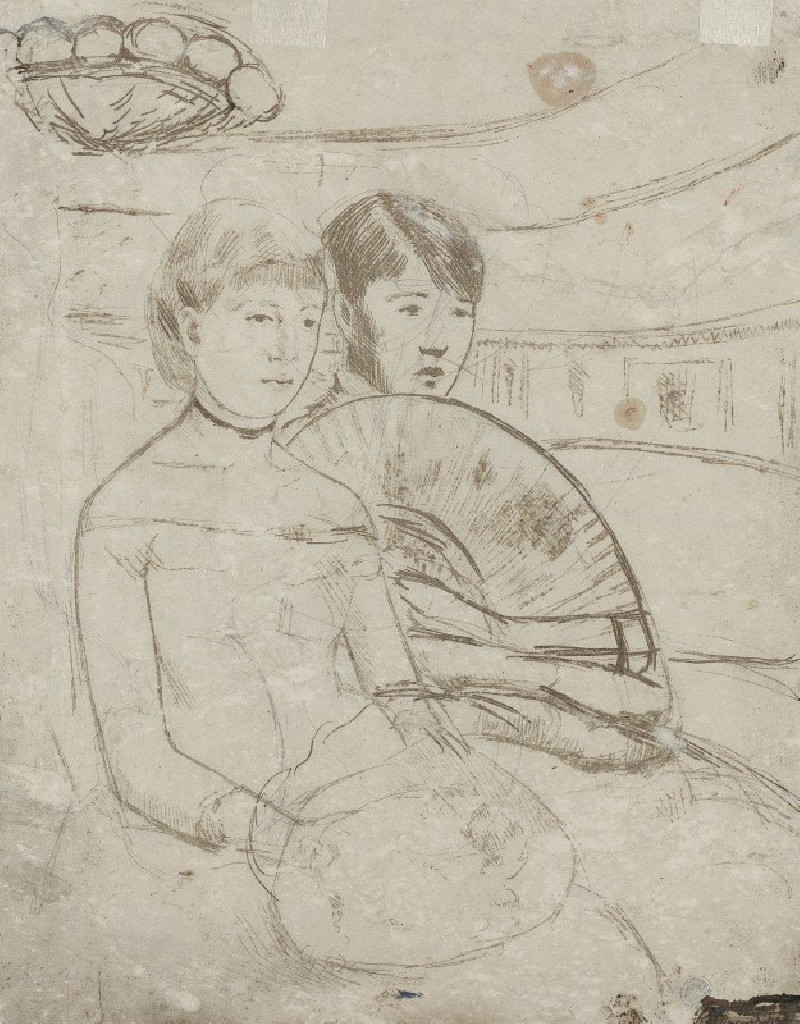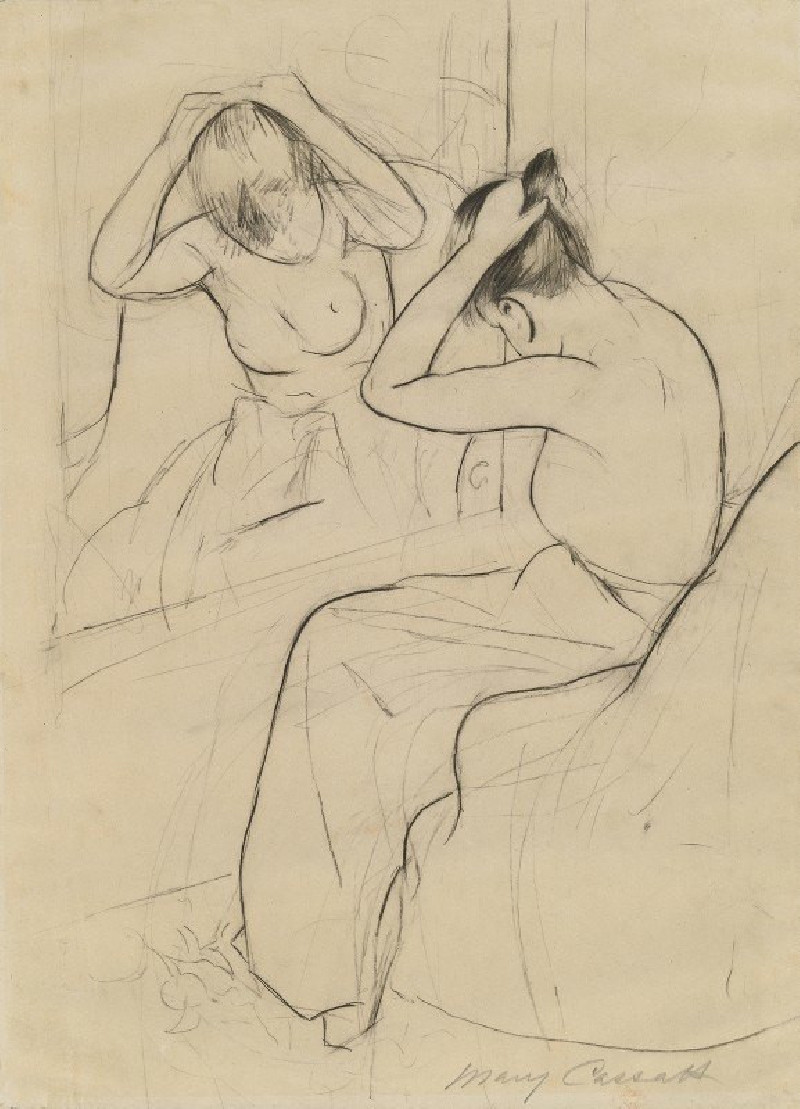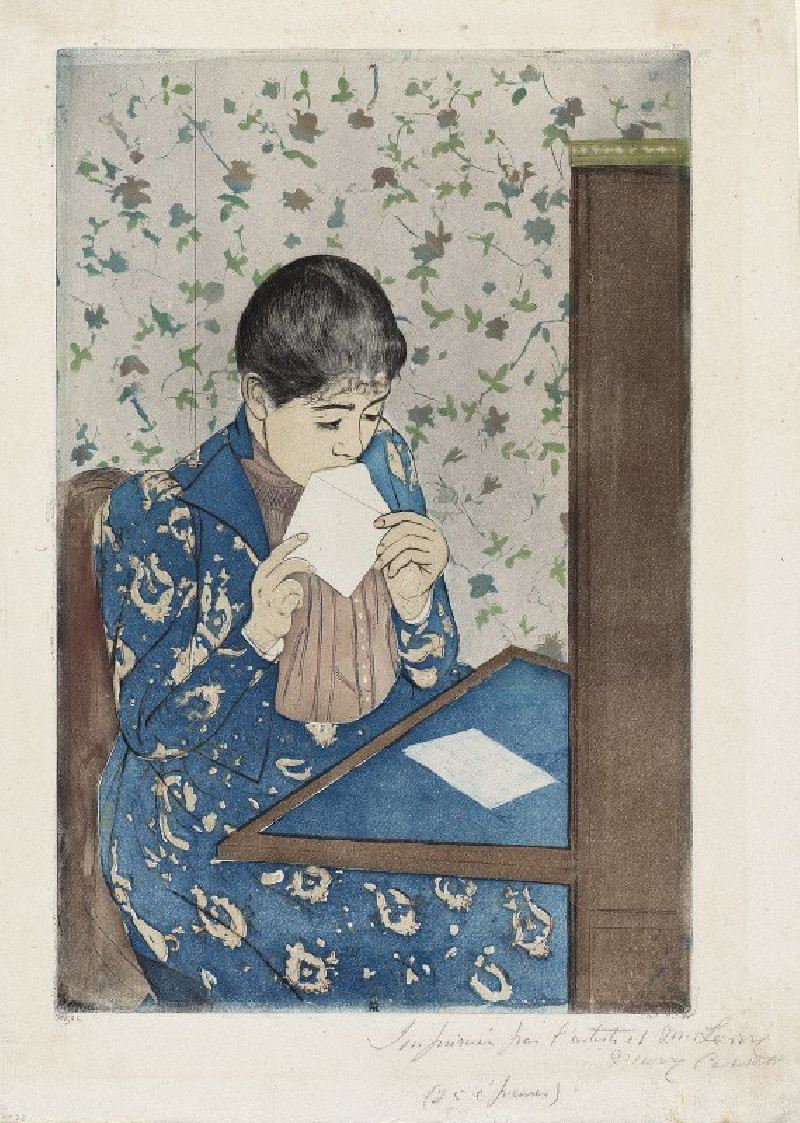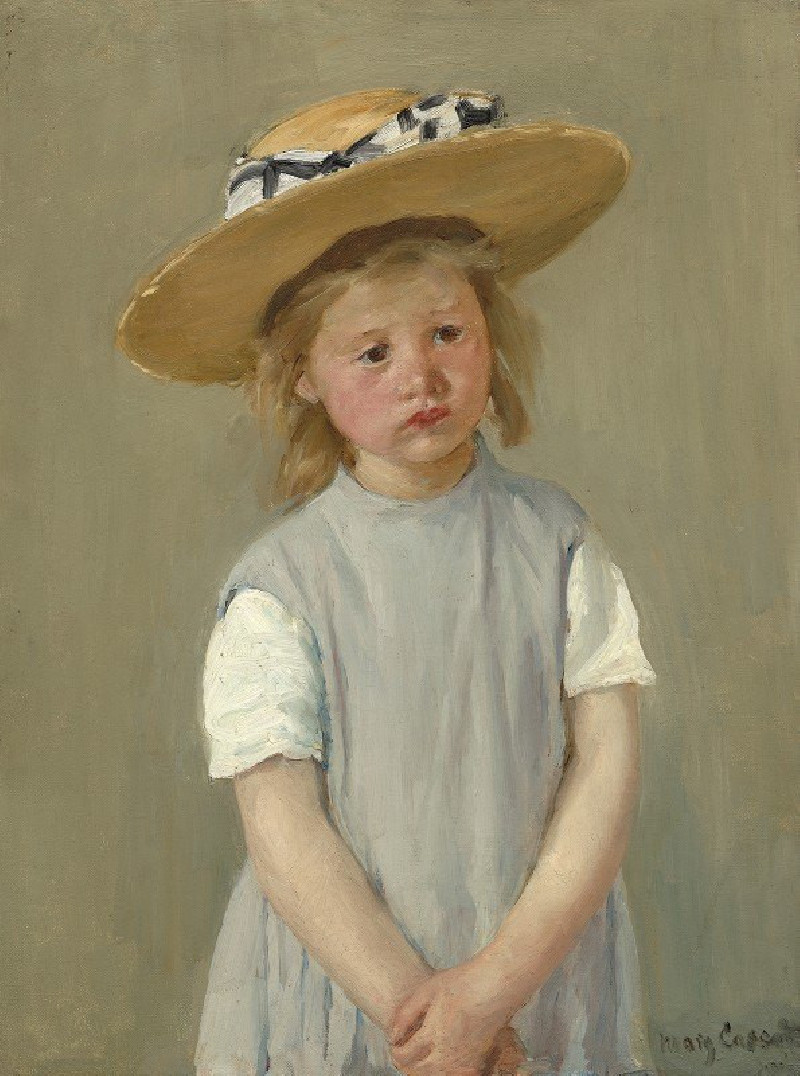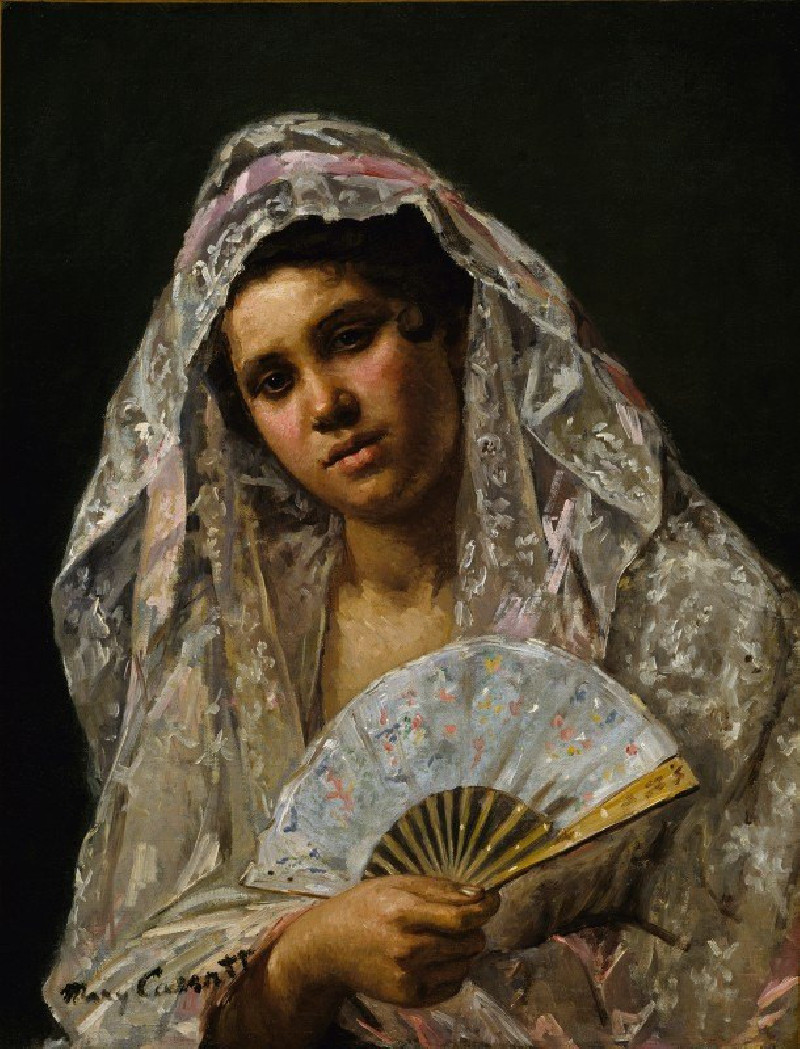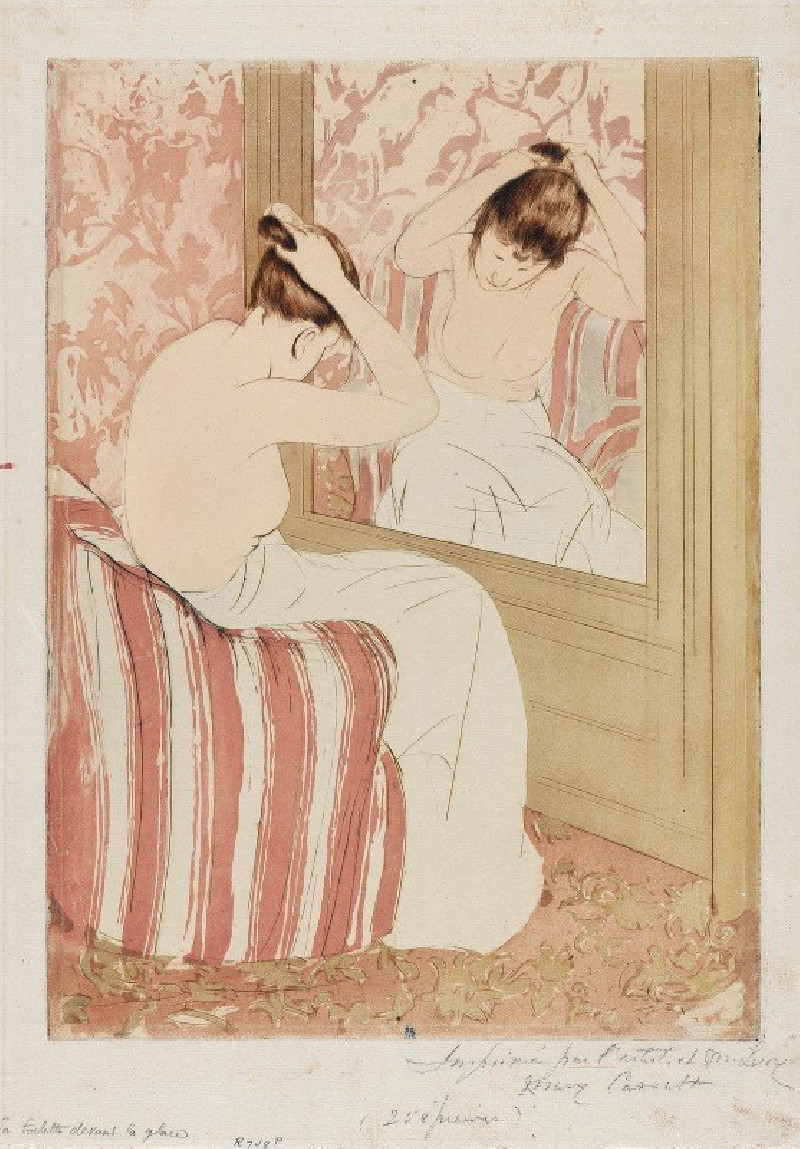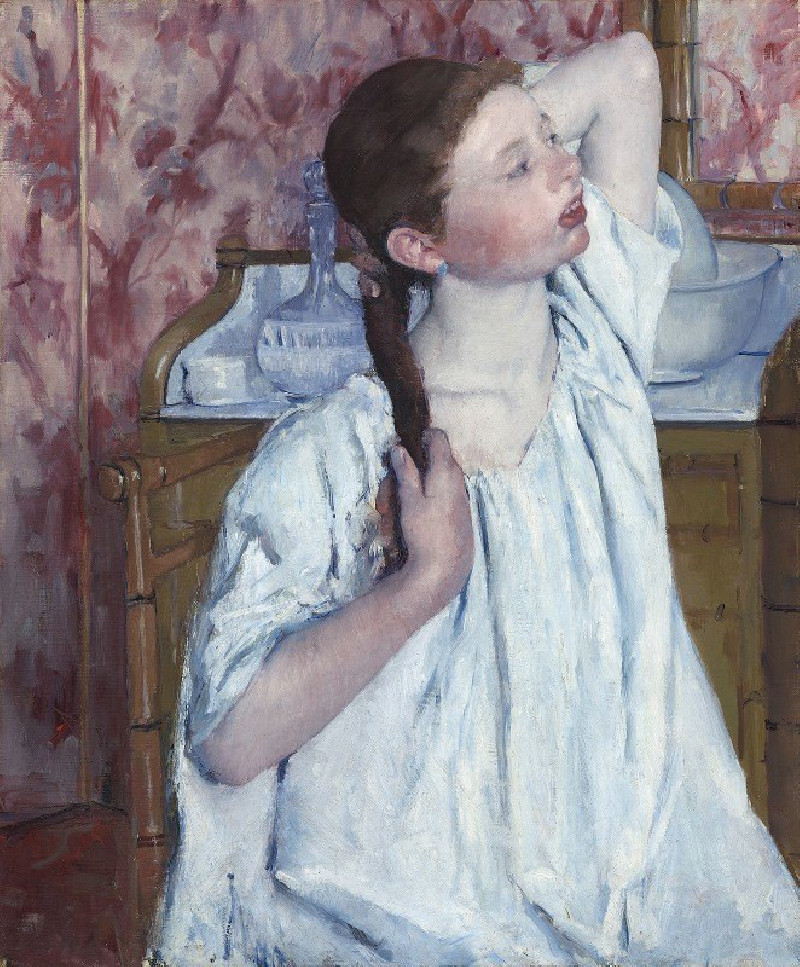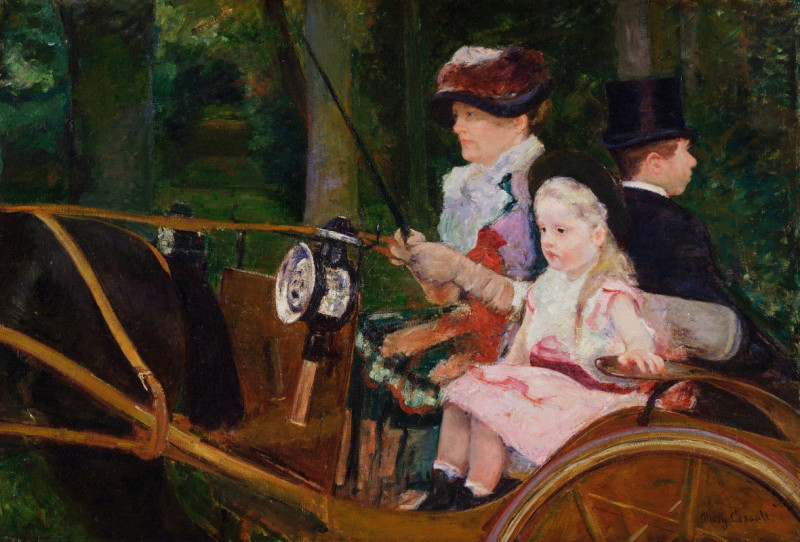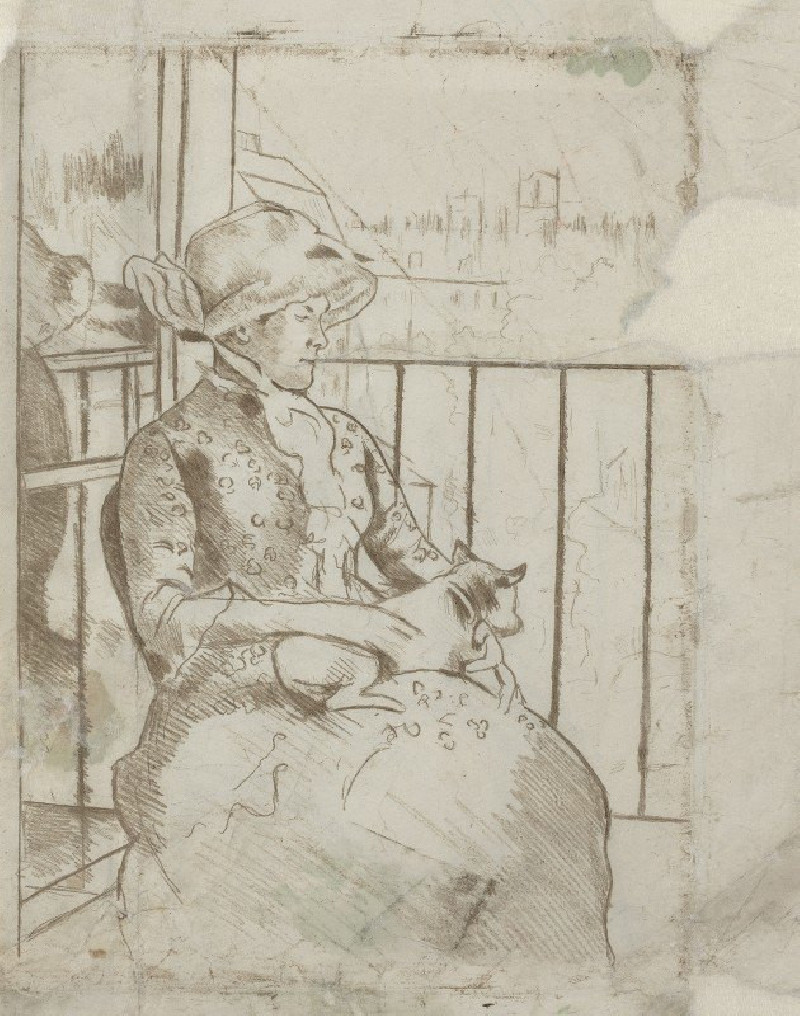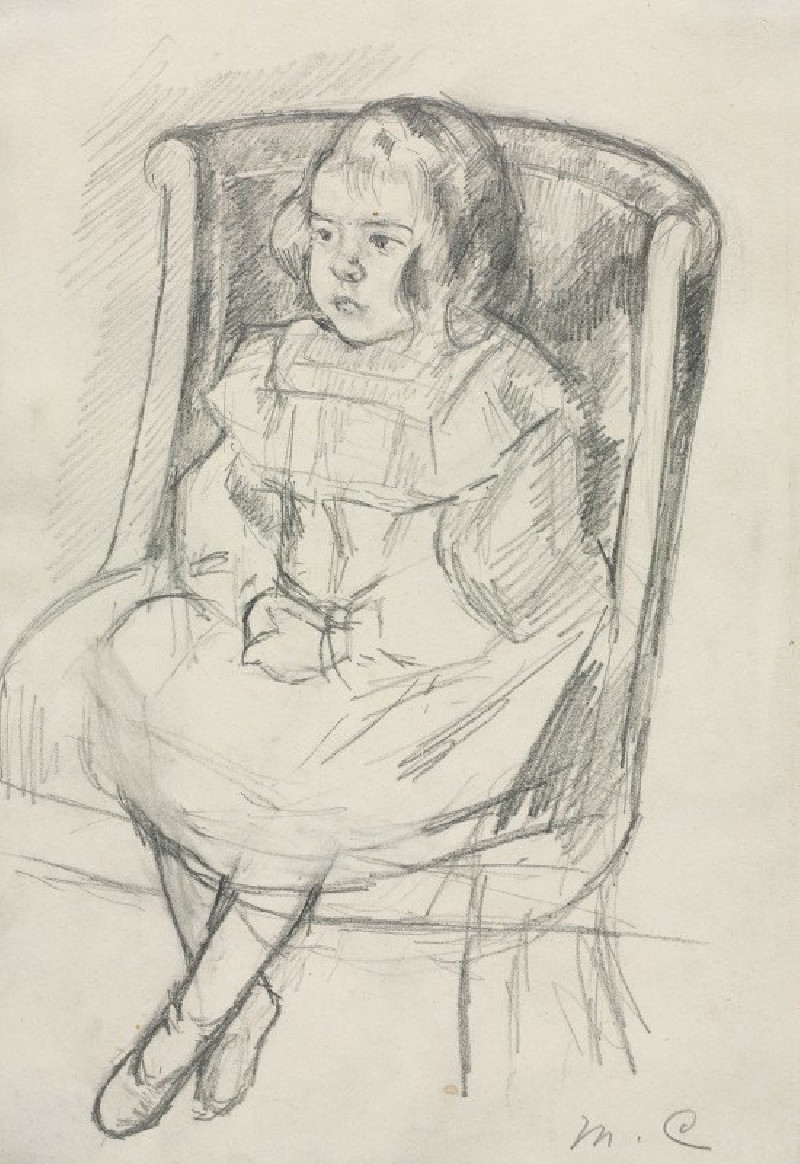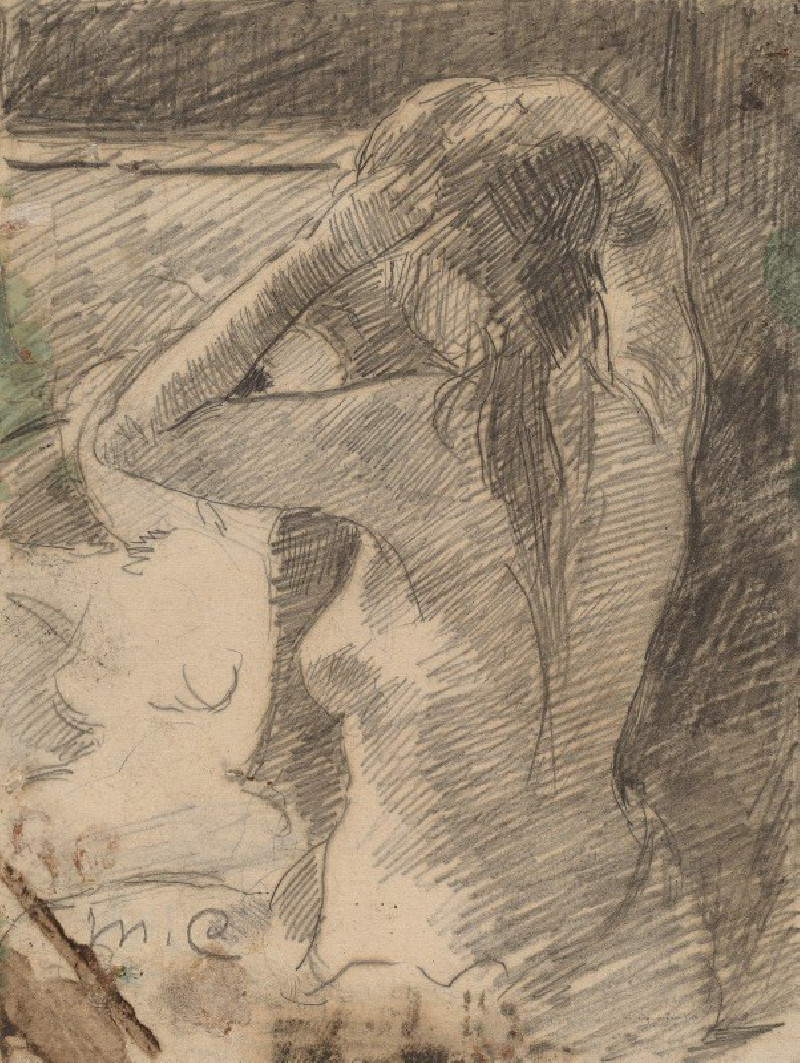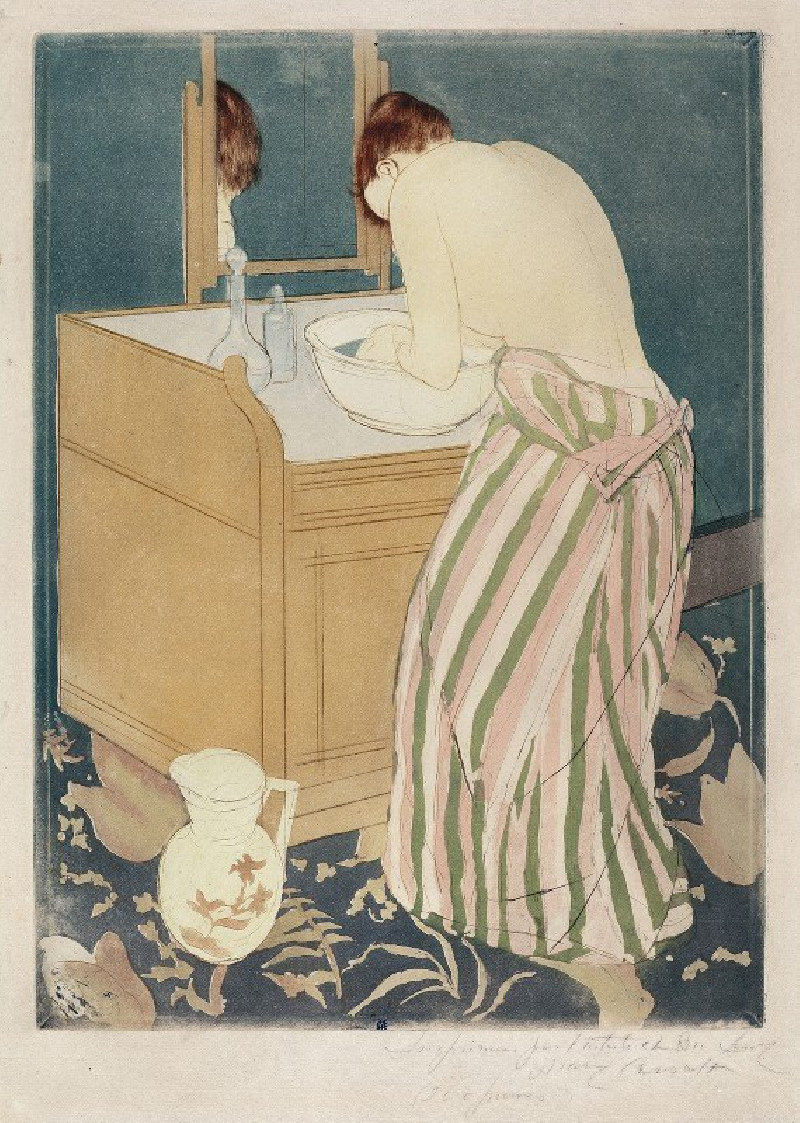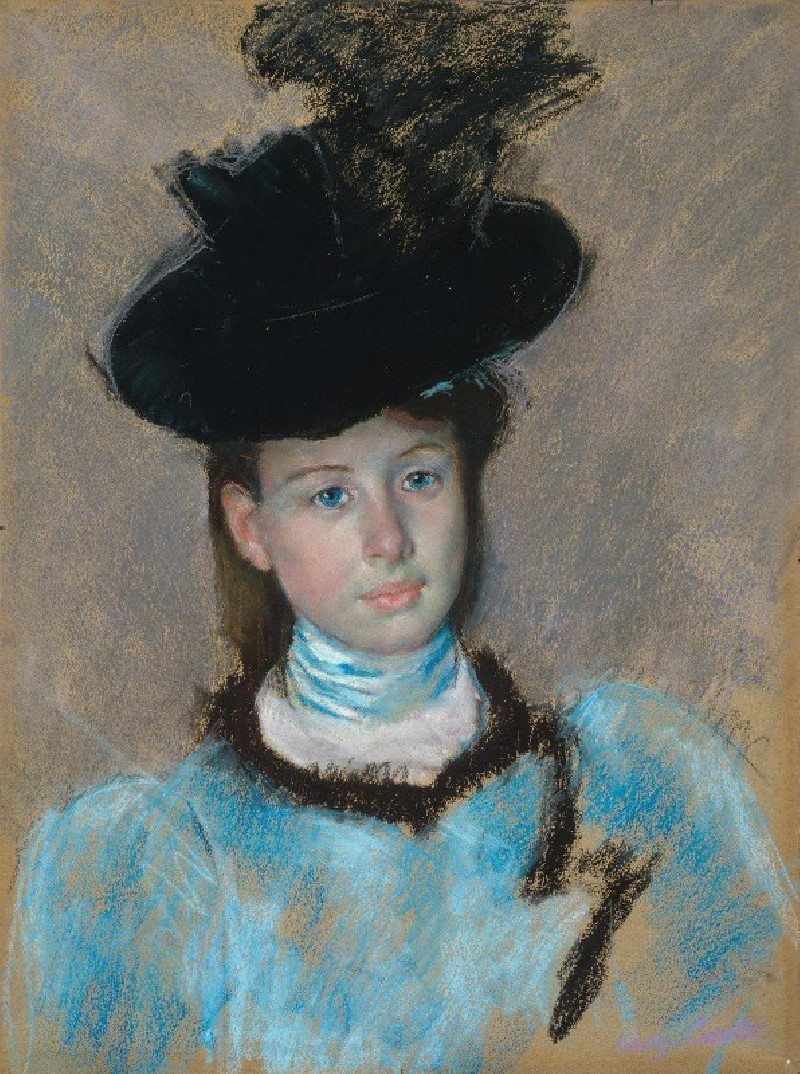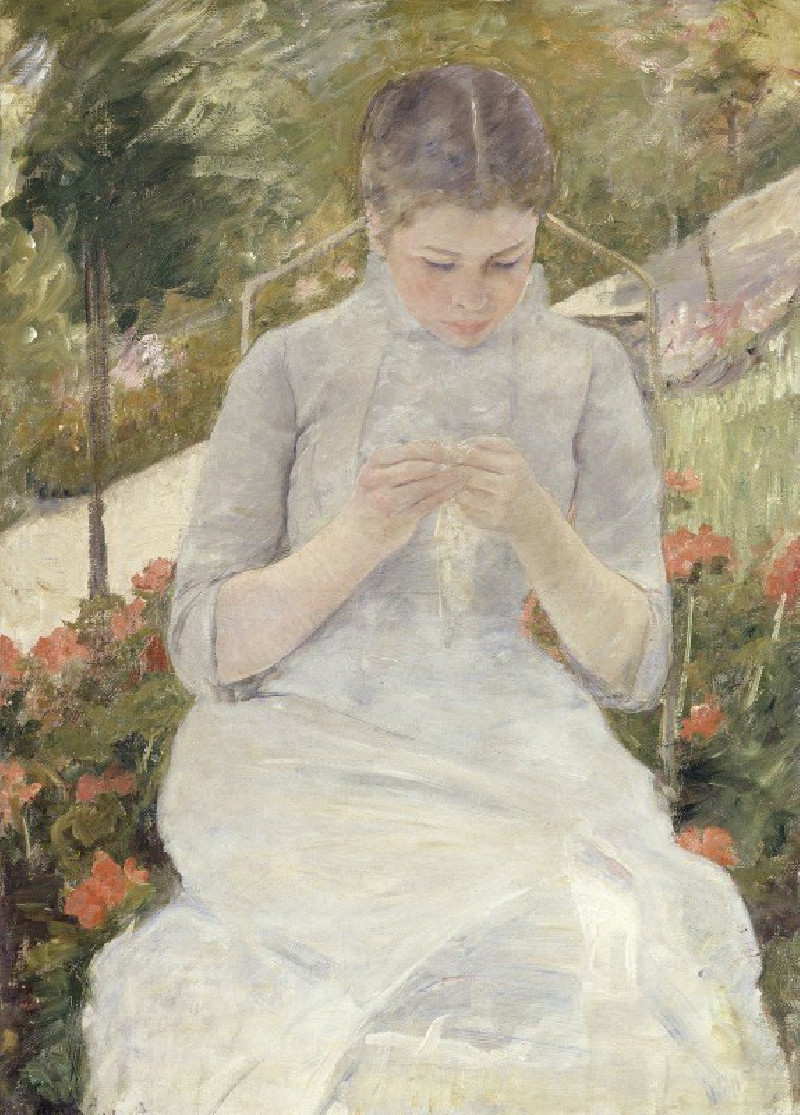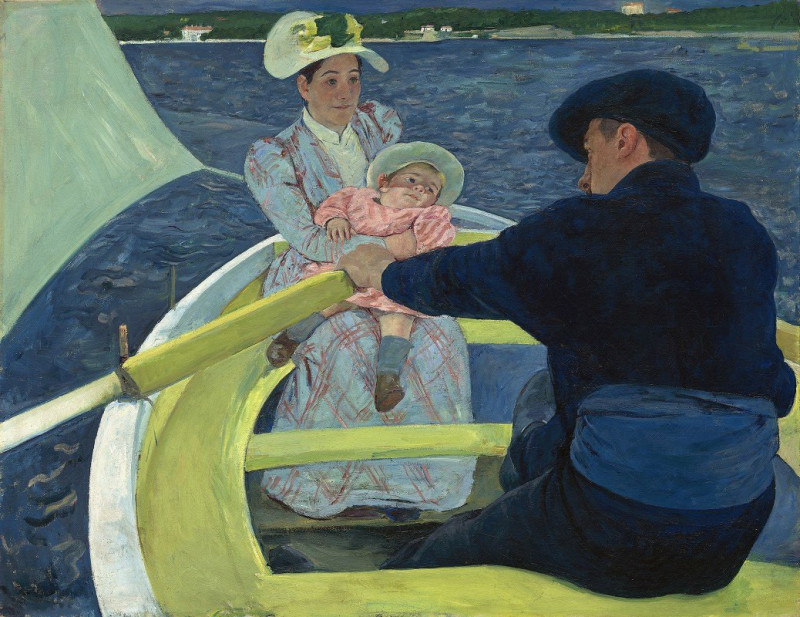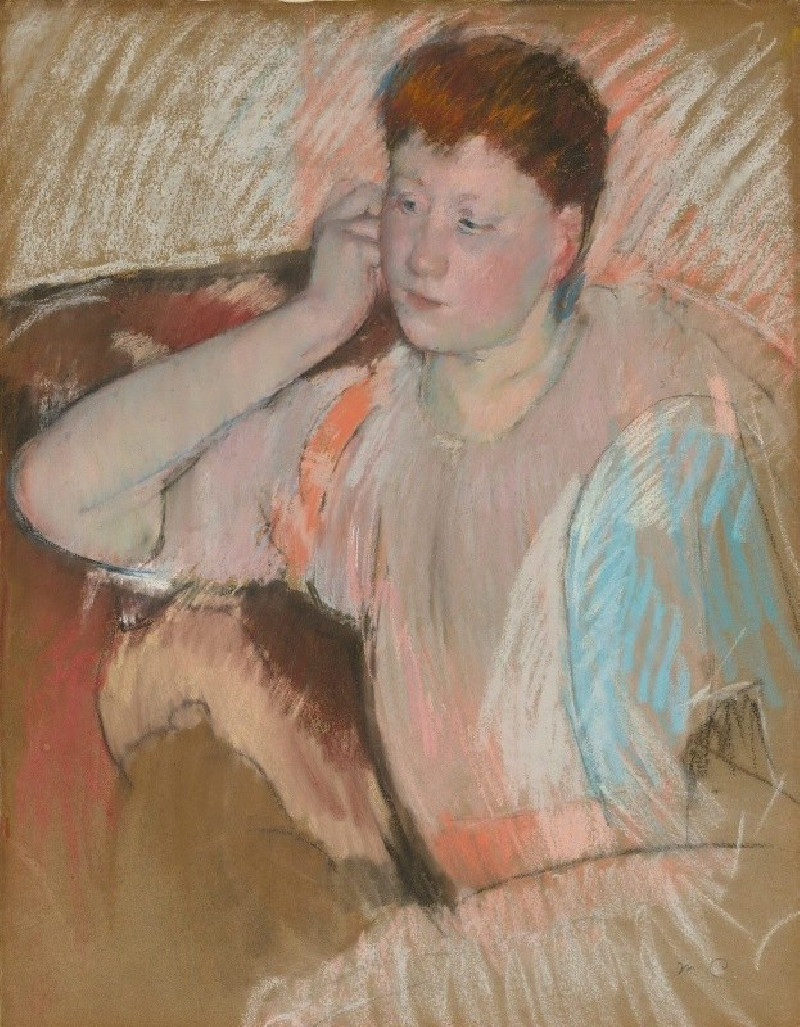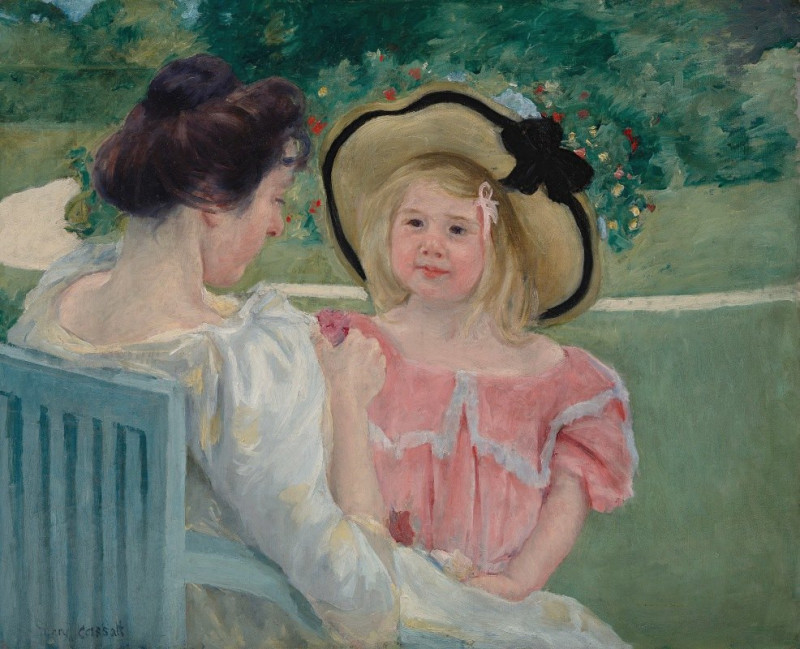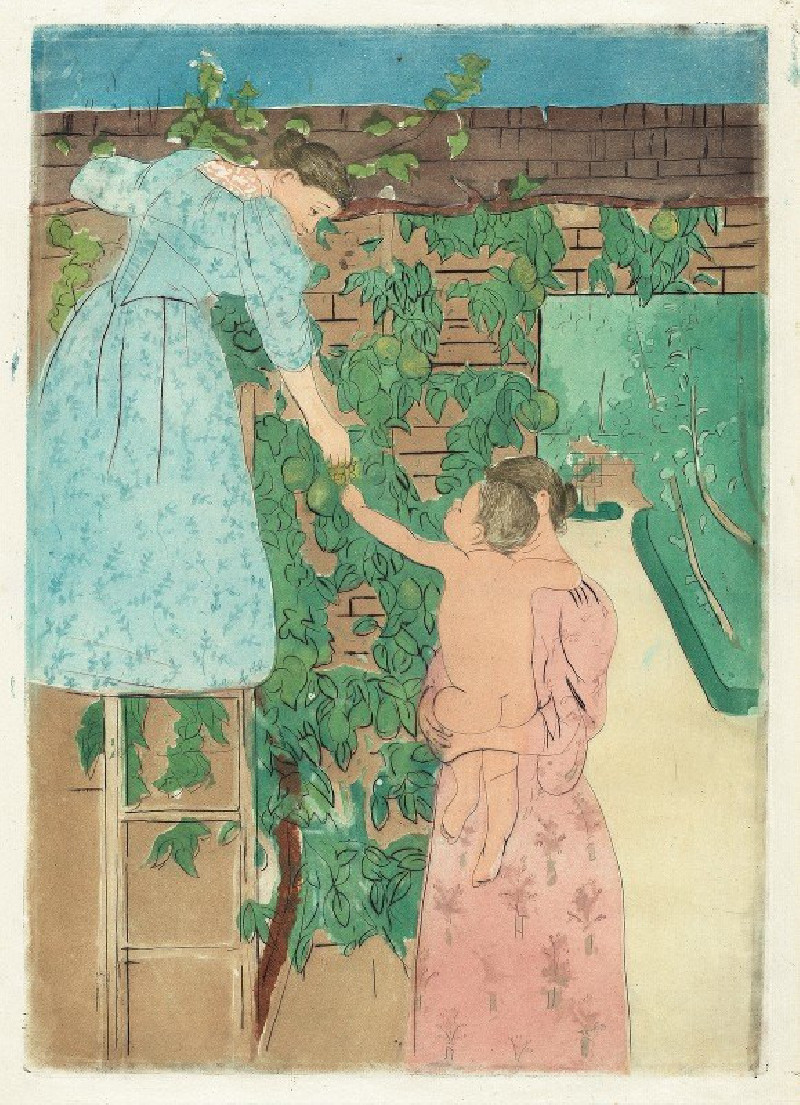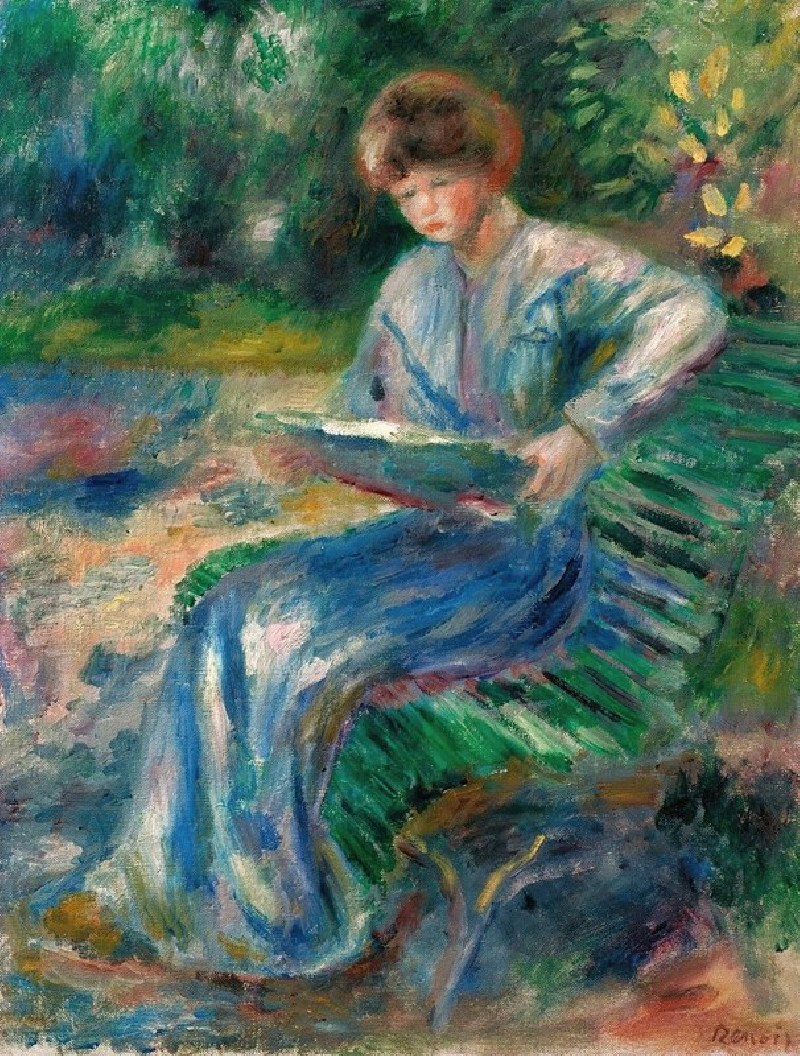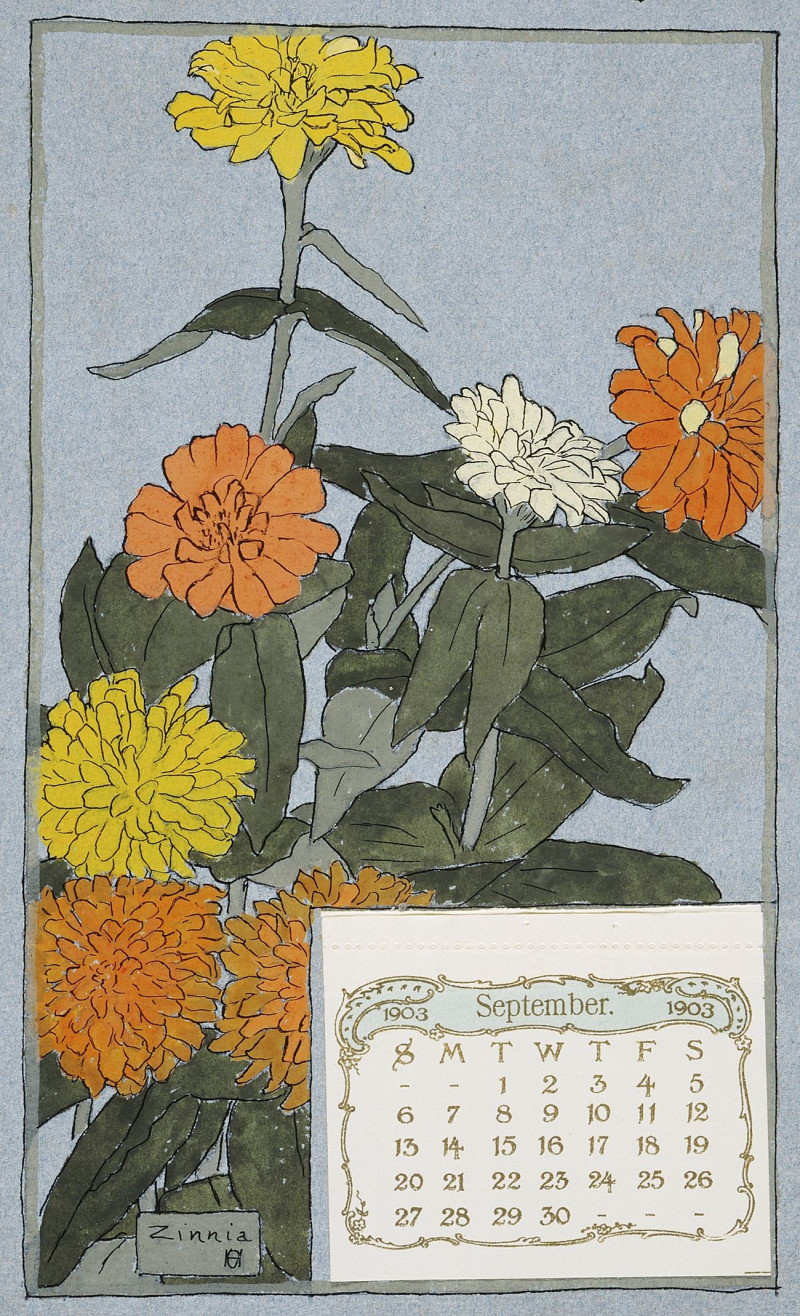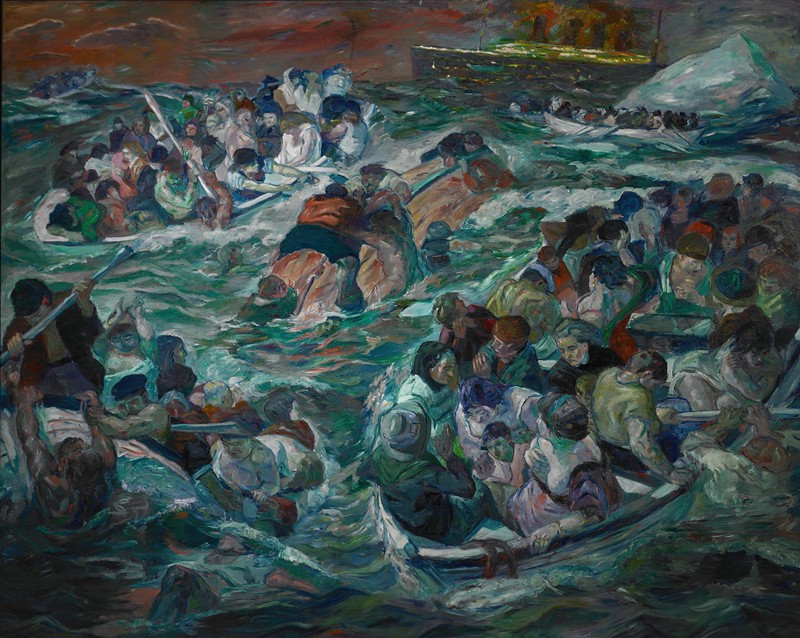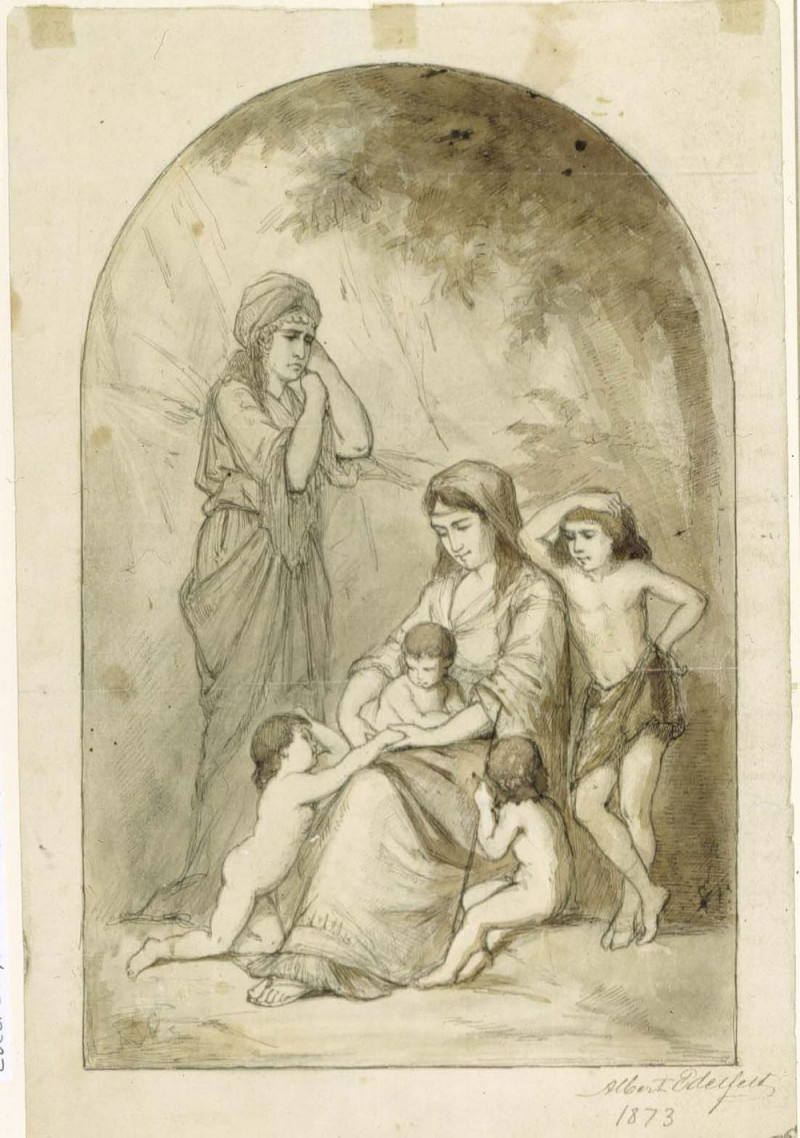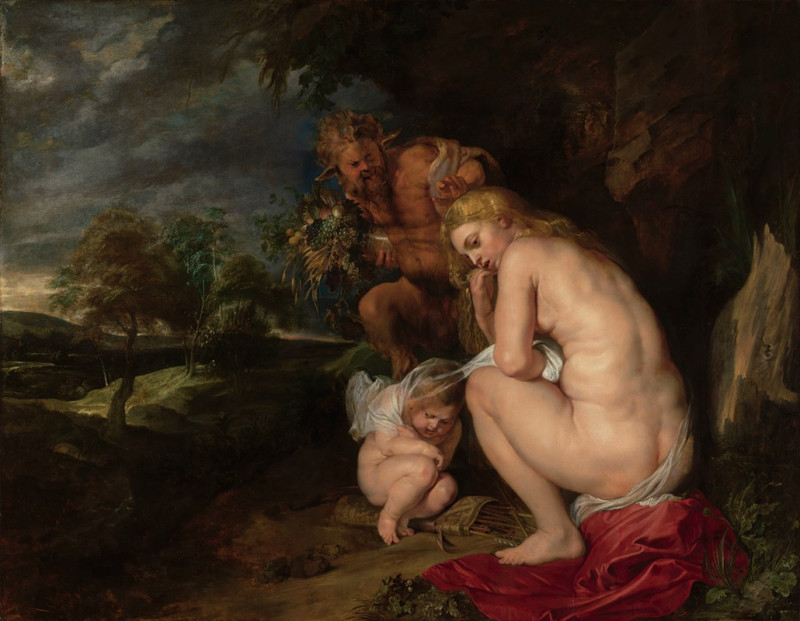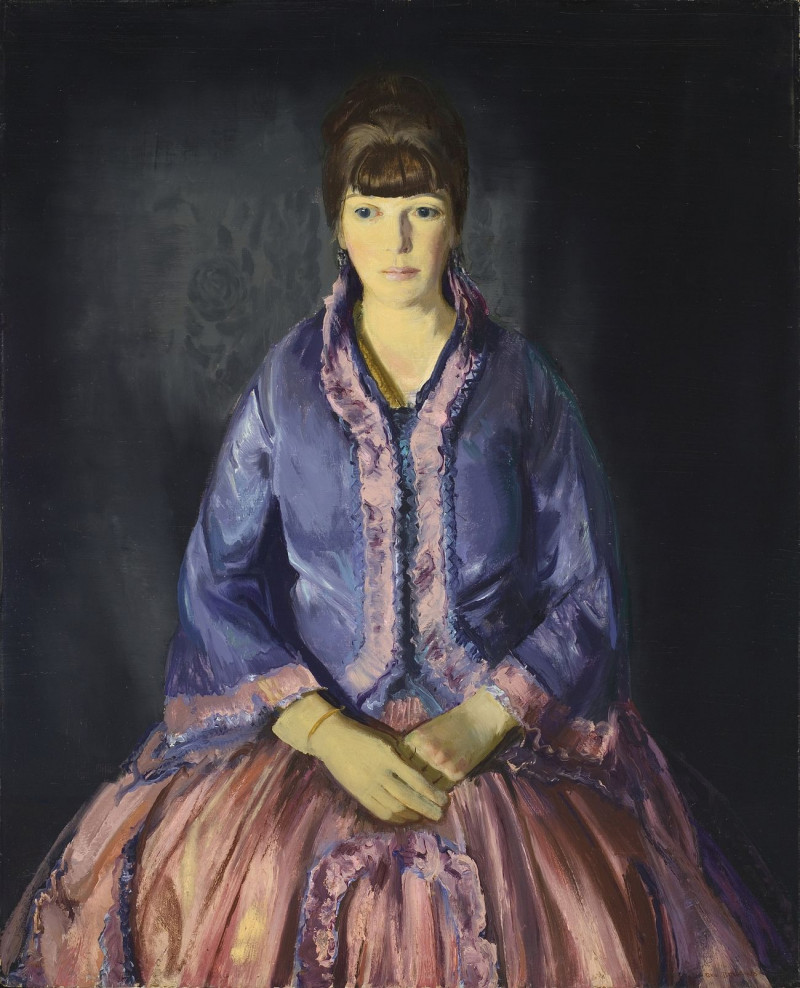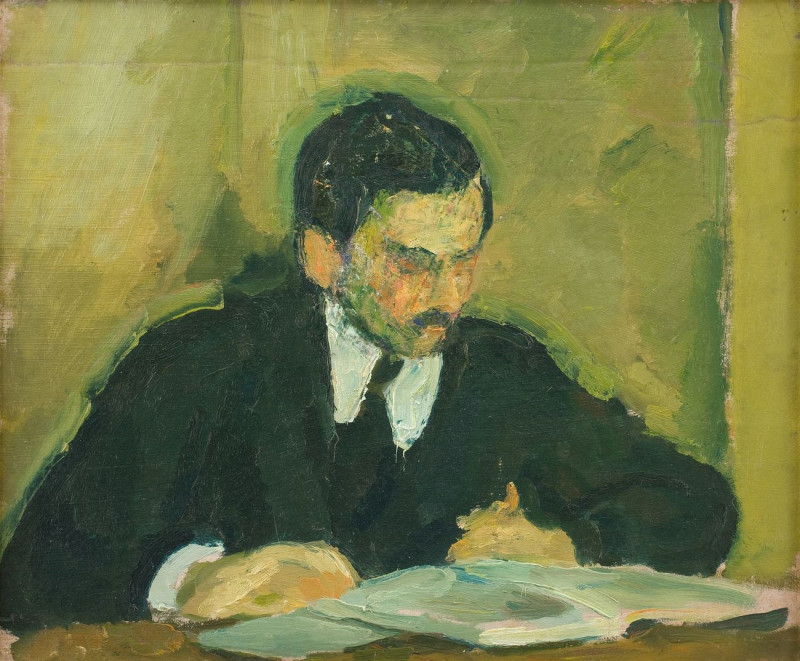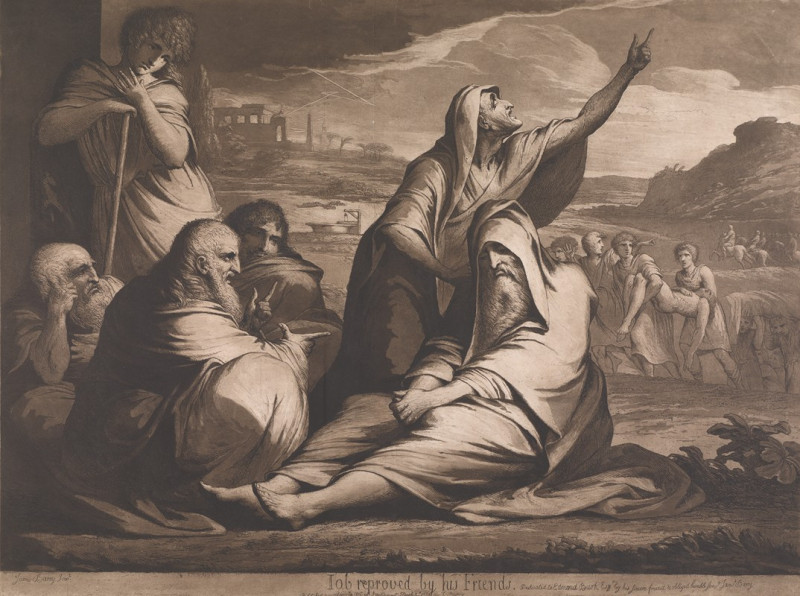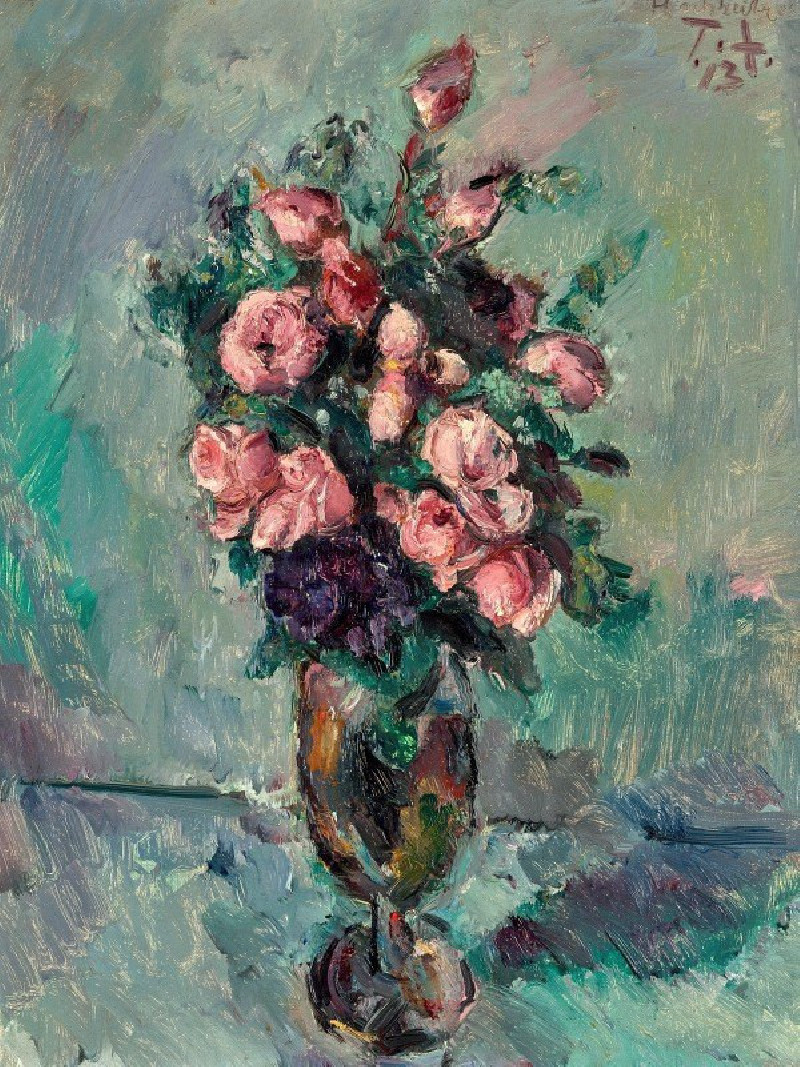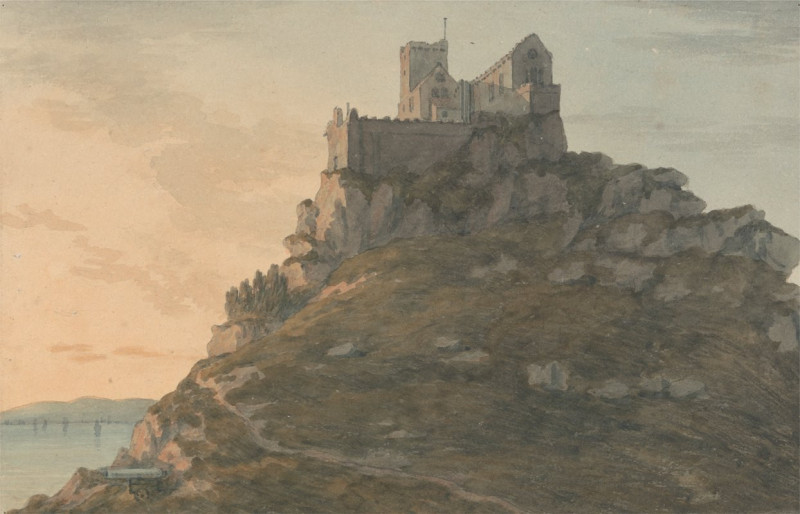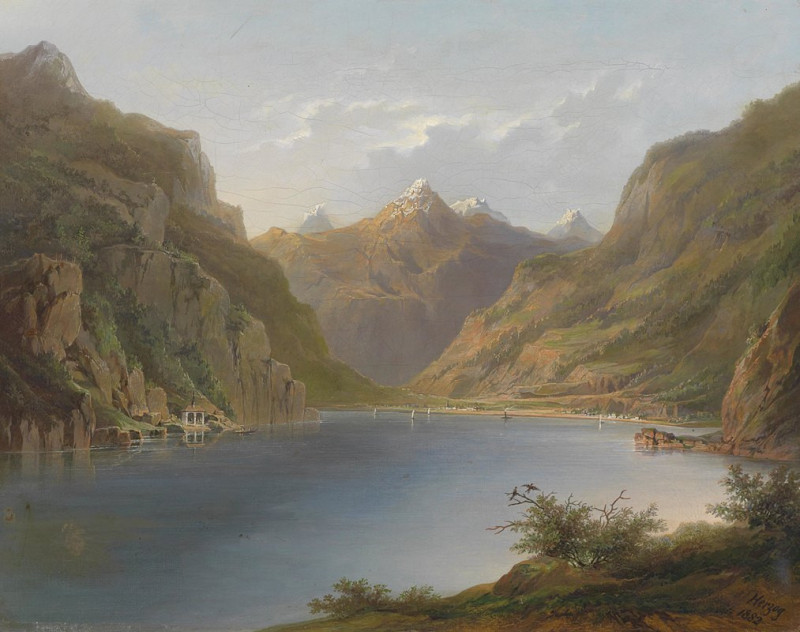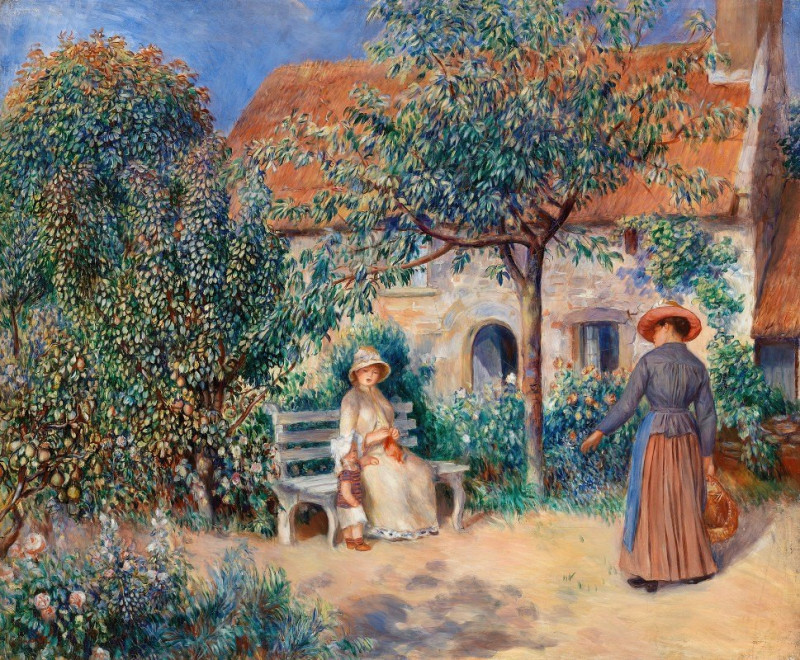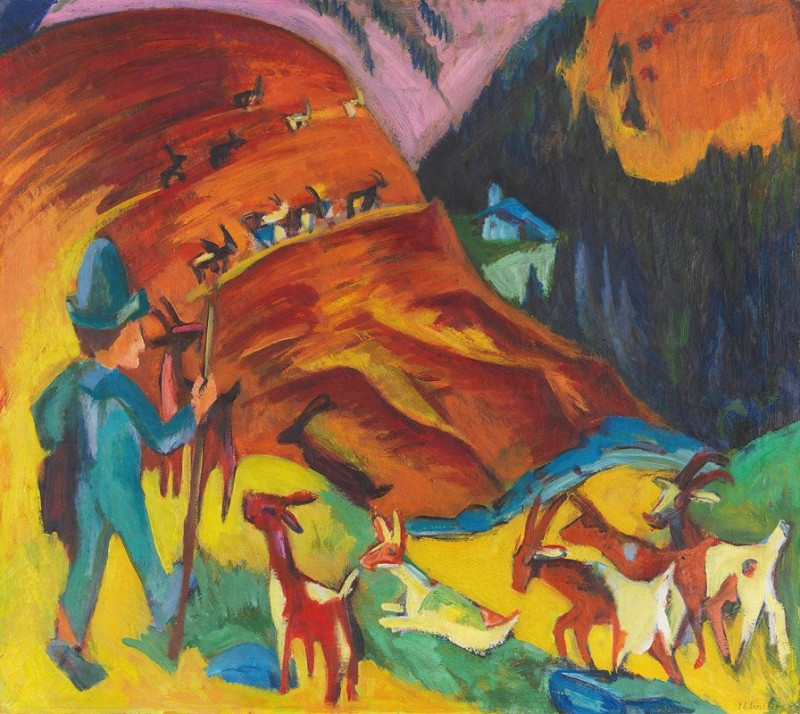Knitting in the Library (verso) (c. 1881)
Technique: Giclée quality print
Recommended by our customers
More about this artwork
In "Knitting in the Library (verso)," created around 1881, American artist Mary Cassatt captures a serene yet intimate snapshot of domestic life that resonates with understated elegance. Cassatt, renowned for her insightful depictions of women and children, employs delicate lines to illustrate a moment of peaceful reflection.The artwork features a young woman engrossed in her knitting. She is seated comfortably in a plush armchair, surrounded by towering shelves filled with books, suggesting that this quiet library space is a haven for personal leisure and thought. Cassatt's use of soft pencil strokes imbues the scene with a gentle, almost ethereal quality, emphasizing the woman’s absorption in her task. The light and shadow play subtly across her figure and the folds of her dress, creating a sense of depth and texture.This piece is particularly significant as it showcases Cassatt’s deft skill in using simple scenes from everyday life to explore broader themes of femininity, introspection, and the private worlds occupied by women. "Knitting in the Library" not only highlights Cassatt’s mastery in portraying the nuances of individual engagement but also echoes the wider cultural appreciation for the quiet moments that often go unnoticed.This drawing invites viewers to pause and reflect, much like the subject herself, on the beauty and tranquility of a solitary moment. It serves as a reminder of the value found in daily activities and the profound stillness that can be discovered in one’s own company.
Delivery
Returns
Mary Stevenson Cassatt was an American painter and printmaker. She was born in Allegheny City, Pennsylvania (now part of Pittsburgh’s North Side), but lived much of her adult life in France where she befriended Edgar Degas and exhibited with the Impressionists. Cassatt often created images of the social and private lives of women, with particular emphasis on the intimate bonds between mothers and children.
She was described by Gustave Geffroy as one of "les trois grandes dames" (the three great ladies) of Impressionism alongside Marie Bracquemond and Berthe Morisot.In 1879, Diego Martelli compared her to Degas, as they both sought to depict movement, light, and design in the most modern sense.

